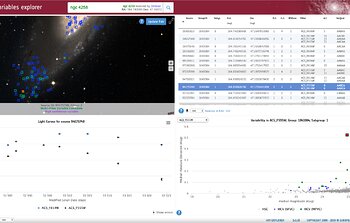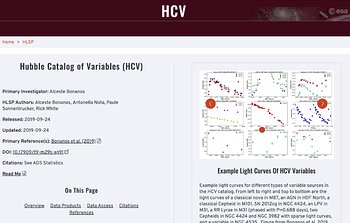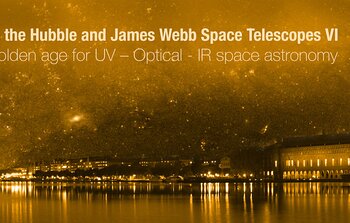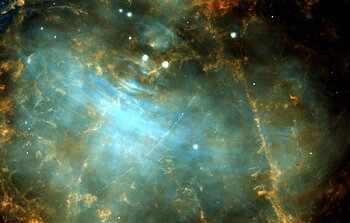The sense of accomplishment is tangible today — there is so much exciting news to share with you all. First, I am delighted to announce that the four-year effort to design and create a Hubble Catalog of Variables (HCV) from the Hubble Source Catalog (HSC) has come to a glorious end. The HCV is today released to the astronomical community, and you can all access it and exploit its wealth, with plenty of time to prepare for the next round of Hubble and JWST proposal applications. You can find here some information about the HCV, in the words of the HCV Principal Investigator, Dr. Alceste Bonanos from the National Observatory of Athens. The HCV was sponsored by ESA in collaboration with STScI, and is offered to the Hubble users community as another resource to help them take advantage of the rich Hubble archive.
Querying the HCV is made easy by the HCV Explorer, a handy and friendly interface developed at the ESA European Space Astronomy Centre (ESAC). Details about the HCV Explorer can be found here together with a few examples (here) that showcase the capabilities and the versatility of the HCV.
One of the unique strengths of the HCV is the long baseline of Hubble observations, which covers three decades. In fact, we will be celebrating the 30th anniversary of Hubble’s launch in Stockholm, Sweden, on 30 March–2 April 2020. In collaboration with the Department of Astronomy of Stockholm University, ESA is announcing the sixth conference in the series: “Science with the Hubble and James Webb Space Telescopes – Entering a golden age for UV-Optical-IR space astronomy”. The conference will be held at the Hotel Hasselbacken, one of the historical landmarks in the city of Stockholm. Read here about the goals of the conference, which — in addition to celebrating Hubble’s continued contributions to our collective understanding of the Universe — will put Hubble and JWST, in synergy, in the context of a rich backdrop of space missions and ground observatories which will shape the astrophysical landscape over the next decade. Join us in Stockholm next spring; we promise it will be an interesting, exciting and fun event for you all!
Contacts:
Antonella Nota
ESA HST Project Scientist, STScI
Email: [email protected]

|
24 September 2019: Alceste Bonanos (NOA)
ESA/Hubble is pleased to announce the release of the Hubble Catalog of Variables, the first full, homogeneous catalog of variable sources based on archival HST data. The HCV was developed over four years by a team of astronomers at the National Observatory of Athens, led by Alceste Bonanos and sponsored by ESA in collaboration with STScI ...
|
| Read more |

|
24 September 2019: By Maria Arevalo, Raul Gutierrez, Javier Duran, Jesus Salgado, Deborah Baines, Bruno Merin, Guido de Marchi, Paule Sonnentrucker and Antonella Nota
The HCV Explorer is a new online web tool to access and visualise the time-series data from the Hubble Catalog of Variables (HCV). Developed by the ESAC Science Data Centre (ESDC), the HCV Explorer offers interactive and connected exploration ...
|
| Read more |

|
24 September 2019: By Paule Sonnentrucker (ESA/STScI)
The HCV is also hosted at the Space Telescope Science Institute (STScI) in the form of a High-Level Science Product (HLSP) in the MAST (Mikulski Archive for Space Telescopes) archive. High-Level Science Products are observations, catalogs, or models that complement and enhance the scientific impact of missions supported by MAST. These products often provide greater ...
|
| Read more |

|
24 September 2019: Alceste Bonanos (NOA)
Here we illustrate the potential of the HCV catalog with three examples from Bonanos et al.:
Variables in the Local Group dwarf galaxy IC 1613
The HCV can be used to identify various types of (faint) variables in resolved galaxies. Types of variables include Cepheids, RR Lyrae, eclipsing binaries and novae.
Figure 1 presents variables selected by ...
|
| Read more |

|
24 September 2019: We are entering a golden age for astronomy. A wealth of multiwavelength and now multimessenger astrophysical observatories, from space and from the ground, are currently operating or being planned, to work in synergy and advance our collective understanding of the Universe.
The ever-versatile Hubble observatory, a result of a long-lasting collaboration between NASA and ESA, provides unmatched UV-visible capabilities. Next ...
|
| Read more |

|
24 September 2019: López Martí, S. Kruk, M. Mahlke, B. Merín, E. Racero & D. Baines
Hubble Asteroid Hunter was a citizen science project to identify serendipitous observations of asteroids in Hubble Space Telescope (HST) images.
The HST data archive can hide unexpected treasures, such as traces of asteroids. These discoveries are highly valuable for scientists studying minor Solar System bodies. For example ...
|
| Read more |
|
|
|
|